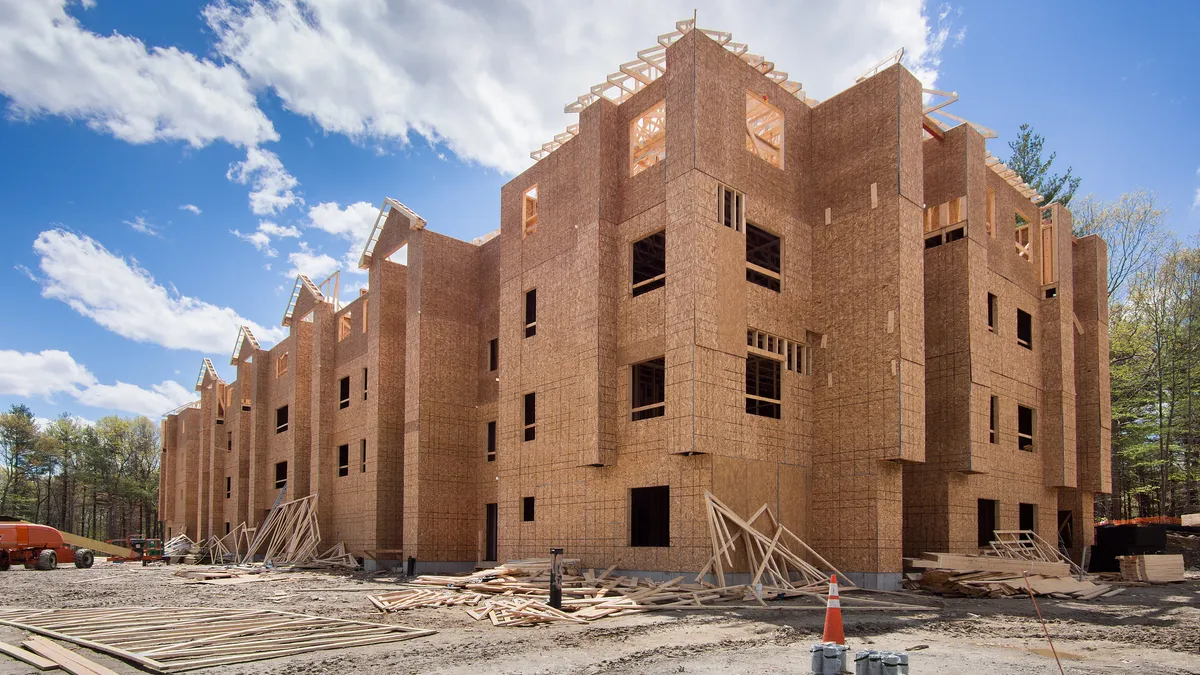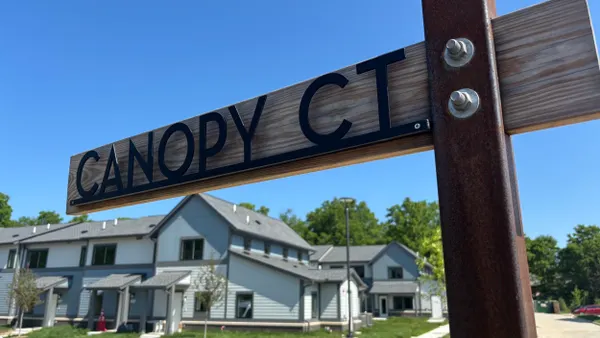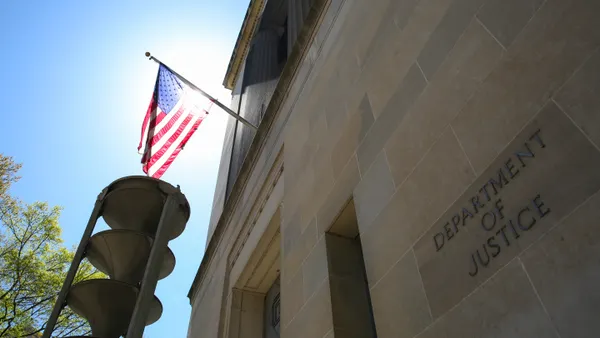Dive Brief:
- Rising rents and declining affordability have led legislators in some jurisdictions — state and federal alike — to pursue regulation of the apartment industry, according to data provider Yardi Matrix’s latest monthly apartment report.
- More than 20 states, and many other municipalities, are considering some form of rent control, following the fast-paced rent growth of the last several years. The National Apartment Association is tracking more than 190 bills related to rent control and highlights Colorado, Massachusetts and Maryland as states of interest.
- These efforts, according to Yardi, have de-incentivized new construction in the areas in which they are enacted — such as St. Paul, Minnesota, in recent years — and led landlords to pull housing stock or defer repairs.
Dive Insight:
To help address ongoing housing affordability challenges, the Biden administration has announced an effort to require property owners to disclose fees for services provided beyond base rent, including applications, credit checks and property services. “While transparency is admirable,” Yardi’s report says, “most property owners are already compliant, and increasing federal regulations adds to the cost of operations.”
At the same time, the housing affordability crisis has led jurisdictions to encourage more housing construction, whether by subsidizing affordable housing or relaxing zoning rules to allow multifamily. The Biden administration’s initiatives on this front include $85 million for municipalities that change land use or zoning regulations to allow more housing to be built. The plan also includes a $27 billion fund to expand affordable housing financing and federal funds for commercial-to-multifamily conversions.
The national average multifamily rent rose by $2 to $1,729, while year-over-year rent growth fell to 1.6%, down 30 basis points from last month. The national market has absorbed approximately 120,000 new units this year through the end of May, down from its pandemic-era pace but in line with historical trends, the report said.
A robust job market has kept apartment demand afloat, with 1.7 million new jobs added in the first half of 2023. Yardi still expects the economy to cool in upcoming quarters, but notes that gross domestic product has remained steady up until this point and inflation has begun to recede, strengthening consumer resources on the whole.
At the metro level, Indianapolis has returned to the top with the highest YOY rent growth out of the top 30 metros at 5.5%, tied with New York City. In the short term, Philadelphia had the strongest month-over-month rent growth performance in July, up 0.9%, followed by Chicago at 0.7%.
Sun Belt metros, which have had some of the highest rent growth rates over the past several years, have fallen closer to the middle of the pack. Las Vegas and Phoenix, once outsize performers, remain at the bottom.
The report attributes this “rotation” of market performance to affordability issues brought on by rapid rent increases, as well as declining domestic migration and strong supply growth. Generally, rent growth has been strongest in markets with high occupancy and low new inventory.
| Market | YOY rent growth, July 2023 | YOY rent growth, June 2023 | Difference |
|---|---|---|---|
| Indianapolis | 5.5% | 6.1% | -0.6 |
| New York City | 5.5% | 6.3% | -0.8 |
| New Jersey | 5.4% | 6.5% | -1.1 |
| Chicago | 5.2% | 4.9% | 0.3 |
| Boston | 4.3% | 4.7% | -0.4 |
| San Diego | 4.0% | 4.5% | -0.5 |
| Philadelphia | 3.7% | 3.1% | 0.6 |
| Columbus, Ohio | 3.0% | 4.1% | -1.1 |
| Richmond, Virginia | 2.5% | 2.3% | 0.2 |
| Miami metro | 2.2% | 2.1% | 0.1 |
SOURCE: Yardi Matrix












